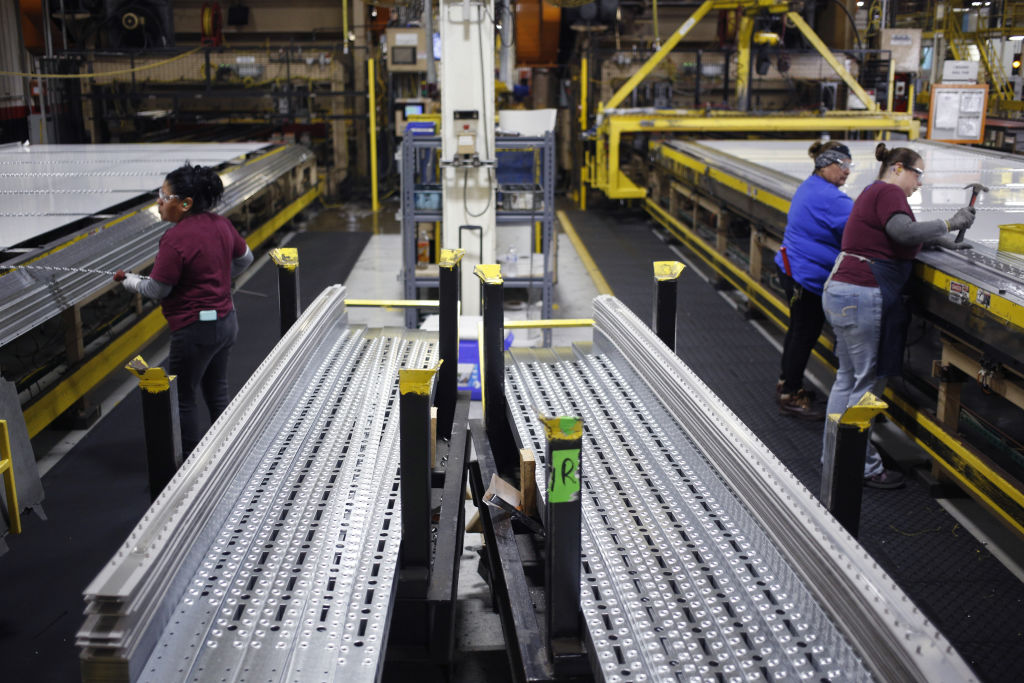Steel imports decreased from 18 million net tons in 1968
to 14 million net tons in 1969 ana 13.4 million net tons in
1970. Dur ing 1971, the arrangements played a minor role in
relation to supply and demand in the marketplace. Further,
in Decemoer 1971, the uniteå States devalued the dollar and the
corresponding appreciation of foreign currencies' increased the
pr ice of impor ted stee 1, the r eoy tend ing to ease compet i t ive
pressure from Íinports. The Voluntary Res.tra.int Agreements were
extenåeå in revised form for another 3 years, running through
1974. They provided for firm commitments regarding the shipment of different products, lowered the 5 percent annual growth
factor to 2.5 percent a year, and added the United Kingdom as a
participant.
The quotas were modified to place specific tonnage
limitations on specialty (stainless, tool, and alloy) steels
and to bring about firmer commitments with regard to proåuct
mix and geographic limitations.
In spite of the VRA, steel imports reached a peak of 18.5
million net tons in 1971. "Steel exports to the Uniteå states
during 1972 and 1973 were less than the quotas; Government,
domestic, and foreign industry representatives believe dollar
devaluations and the high demand for steel in Europe, Japan,
and other countries--not the voluntary restraint agreements--
limited foreign exports to the Uniteå States" (10, p. 18).
Except for cyclical variations, the imports of steel were fairly
stable after the VRA's went into effect. It is quite possible
that they were successful in holding down imports. Insofar as
-77-
Japan is concerned, the VRA does appear to have had a significant effect in shifting exports to other markets. In the
case of Europe, r is ing demand appea r s to have exerted a
decisive influence.
As a result of the worldwide boom for
steel in 1974, combined with the revaluation of the dollar,
the VRA's were not extended.
Exper imental Negotiating Agreement
A typical pattern during a labor col'tråct year would be a
sharp rise in shipments as consumers try to protect themselves
by building up inventories in anticipation of possible strikes
and a sharp fall when an agreement is made. Initially, imports
were stimulated by strike hedge buying in 1959 and before the
expiration of each union contract throughout the sixties.
Domestic consumers of steel ordered heavily from foreign
sources to assure themselves adequate supplies as a protection
against the possibility of a long strike (28, p. 1521. In
March 1973, the top 10 steel companies worked out with the
united Steelworkers of America the Experimental Negotiating
Agreement (ENA). The ENA established a new procedure for contract negotiations by replacing the general strike threat with
voluntary final and binding arbitration. -Both parties felt
that because of the increasing threat of foreign imports and
the long layoffs that became associated with stockpiling in
advance of a possible strike, it made sense to enter into
;~~.J
-78-
this new approach in collective bargaining." ~/ Fluctuations
in the rate of output are relevant to cost for the firm since
a steady rate of production is generally cheaper than a fluctuating rate. The Experimental Negotiating Agreement was
renewed for the 1980 wage negotiations, so that there is now
no apparent threat of an industrywide steel str ike before
1 98 3. lQ/
During periods of low world demand, ma~yforeign producers
will attempt to penetrate the U.S. market with lower priced
products. Foreign producers are quick to redirect these
supplies in per iods of higher demand abroad. ll/ In a per iod
such as 1973-74 when the market was tight, imports were less
than in 1972 and were priced far above the domestic price.
During periods of tight supply, domestic steel producers
allocate their production to customers on the basis of their
previous purchases. In such periods, steel users have been
unable to obtain all the steel they desired unless willing to
pay substantially higher prices. Delivery times for most steel
producers were slower than normal. Those users who relied
heavily on imported steel, were not able. to increase their
purchases from domestic suppliers. Many of these buyers may
29/ "The New Economics of World Steel Making," Business Week,
August 3, 1974.
lQ/ "1977 Steel Settlement," Steel Labor, May 1977, p. 18.
ll/ Dec.
"Steelmakers Fret Over Imports Again,"
14,1974.
Business Week,
-79-
have concluded since then that they cannot afford to become
too reliant on foreign supplies, and that their lòng-term
interests are closely tied to those of their domestic steel
suppliers. By 1976, foreign producers were offering substantial discounts in order to capture customers from domestic
producers.


